Moruga hill rice: Trinidad's superfood grows into a farming enterprise
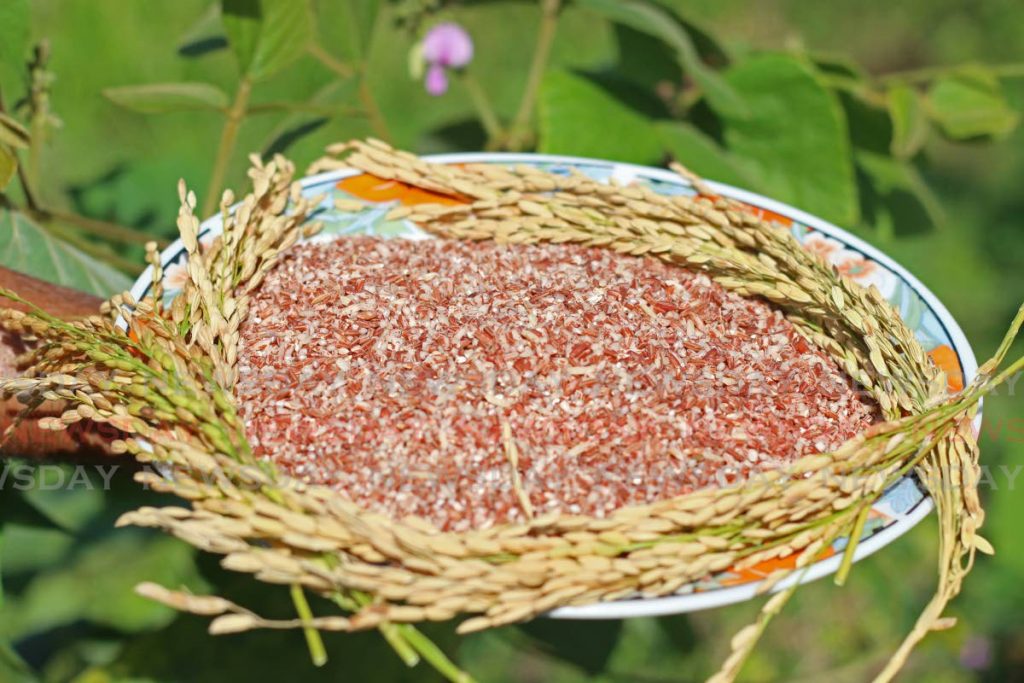
Moruga hill rice has for generations been one of Trinidad and Tobago’s best-kept secrets. The grain has long been a staple among the remote communities of the deep south of Trinidad, with a history going back as much as 200 years, starting with the Merikin settlers.
The Merikins are descended from African Americans in the United States who fought on the side of the British in the 1800s. After the 1812-14 war, Britain resettled them among its colonies, with a sizeable community welcomed in Trinidad. (The Company Villages of Moruga echo this military past).
Most of these formerly enslaved people were from the American South, Georgia and the Carolinas. Some brought with them a strain of rice grown among the enslaved communities – upland bearded hill rice – as a basic part of their diet. They shared their plants with members of the Warahoon (Warao) nation, indigenous people originally from the Orinoco, who also settled in Moruga, and who also brought with them some varieties of hill rice. Since rice cross-breeds among the species very easily, it’s theorised that this hybridisation gave rise to a distinct variety, indigenous to Trinidad.
Even as their descendants continued the tradition of cultivation, most of the country didn’t even realise the bounty in their backyards. The Moruga Hill Rice Multi-purpose Co-Operative Society wants to change that. Established in January 2018 and officially registered with the Ministry of Labour as a co-operative in October 2019, the society has set the lofty goal of producing, processing and marketing Moruga hill rice in enough quantities to make it a viable export crop. The society is made up of just over 63 registered farmers and also farming families in the community.
While hill rice will be its focus, though, president Rachael Cooper-Lee told Business Day recently, the society wants to make Moruga an agroprocessing hub.
“We are multi-purpose, so we have a broader scope beyond just agriculture, but also business, specifically small and micro enterprises. The society was formed to promote Moruga hill rice production, but over time, we realised that the communities in Moruga and environs had a lot of potential for more as it relates to entrepreneurship and the need to create job opportunities and add to the food security of the island,” she said.
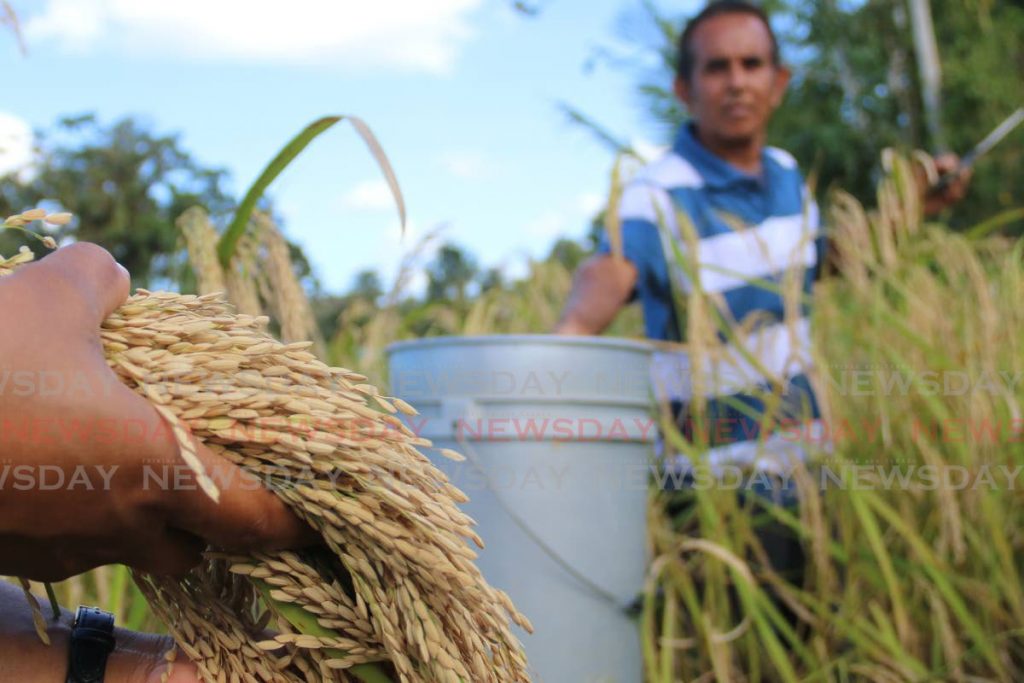
A homegrown superfood
As the Government continues to figure out how to apply its stated mandate of encouraging more local food production, Moruga hill rice is an ideal candidate for development.
It is, first of all, uniquely Trinidadian.
The rice is distinctively red, with a nutty flavour and high in nutrients like iron, fibre and potassium. (The society engaged the labs at the Caribbean Industrial Research Institute (Cariri) to test the nutritional makeup.)
“It’s a superfood. When compared with other foods branded as superfoods, we are right up there. So, when you eat it, because of the iron and the high fibre, it’s like you are getting a complete meal. You are doing yourself a favour by eating it,” Cooper-Lee said.
The traditional way of cooking it is in coconut milk flavoured with herbs, which gives an extra nutritional punch, she added.
The current methods of production also lend to the superfood value. Moruga hill rice is less processed than most of the other commercial rice varieties on the market, which helps retain more of its nutrition. It’s also grown, reaped and dried by hand – it’s a very labour-intensive crop – and naturally grown as much as possible, especially since most of the farmers are small-hold, family farmers.
Moruga also helps with branding – just like the Moruga scorpion pepper was developed in the area to international acclaim, the society hopes to capitalise on that name recognition. It has already had discussions with the intellectual property office to discuss a way forward to get a geographical indicator for Moruga hill rice as it seeks to export it under its Red Gold brand – in a way that is similar to the way Champagne, Scotch whisky, parmesan cheese and iberico ham can only be denoted as genuine based on the specific area of production.
Investment necessary
Before export though, the society understands that it needs to ramp up production. It is, however, confident that with enough investment, it can achieve this.
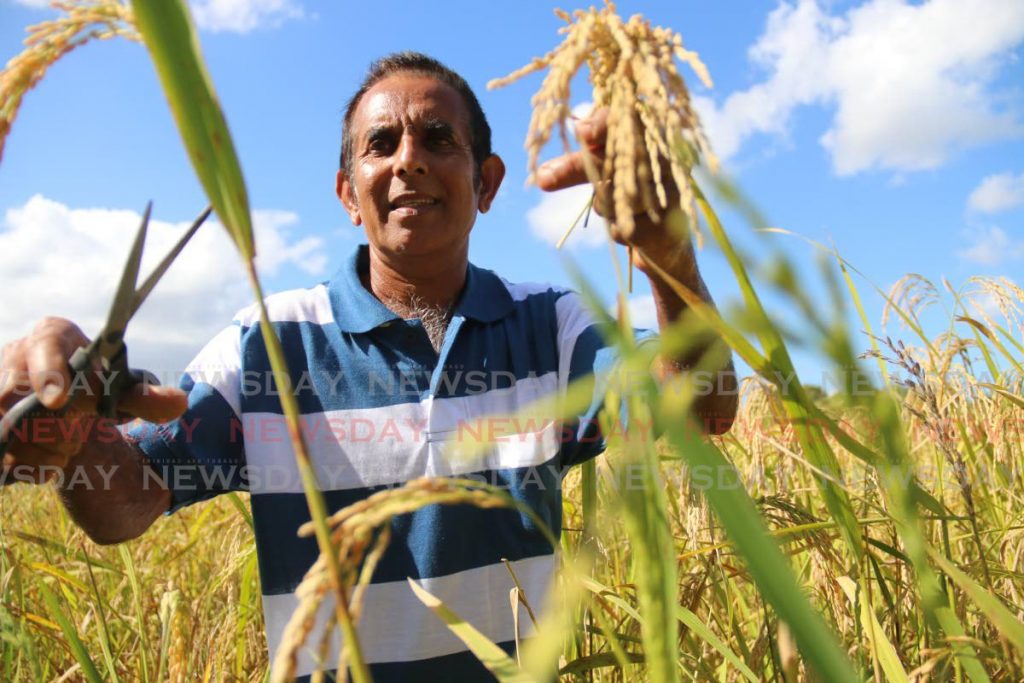
“Based on a study we did in 2018, there are approximately 113 acres under cultivation, which can be easily ramped up if we mechanise and incorporate technology.”
With mechanisation, it increase land use and efficiency in planting and harvesting. In Moruga, Cooper-Lee noted, there is a lot of underutilised land that can be put into production with the right investment.
“In our recent assessment for our business plan we have also seen where it is easy to ramp up production to get it up to cultivate enough and get the output to export. But we need start-up capital.”
The society has earmarked possible sources of financing – from the Agricultural Development Bank, ExporTT and various government grants. Access has proven challenging, though.
Cyrilee Subratee, vice president of the society, noted that in order to qualify for some of these grants, applicants must prove that they have matched resources.
“It is difficult for the co-operative that is starting up with no finance to access a grant when we can’t match it. This is where we need the help to get off the ground.
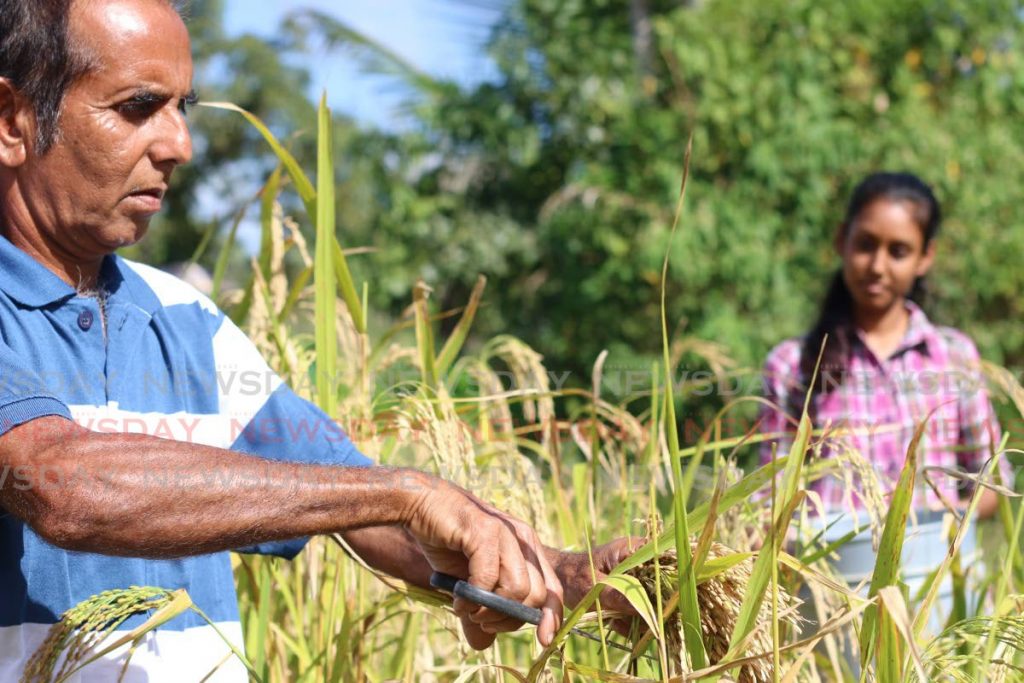
- Marvin Hamilton
"We’d need a good mill, a dryer, because you can’t always depend on the sun. We need a harvester and planters. If we have this type of equipment where a person might be able to produce on two acres, they can increase that to 20 acres.”
The society, he believes, is a good investment, especially as a foreign revenue earner. “There’s a shortage of forex right now. This is a good opportunity to earn forex for the county if we can ramp up our production.”
Cooper-Lee and Subratee estimate that current production among the membership is about 10,000 pounds a year, but much more within the community.
“Even with the threat of covid19 and food security concerns, I’ve seen families pooling together resources and increasing production. And that’s just by hand.”
Growing season
Hill rice, as the name suggests, is not grown in traditional rice paddies. It’s hardier and relies on rainwater and well-drained soil to flourish, as opposed to its swampier cousins that must be grown in wetlands. The land must be prepared in time for the rains, so from January to June, the land is readied, then sown in September to October. It’s ready for reaping in December. Business Day was lucky in that Subratee had a late crop not yet harvested by the end of January and was able to visit his fields in Moruga.
“So long as the ground is not waterlogged, the rice can grow. And while it is done by hand, my dad cultivated an acre by himself. As long as you dedicate the time for it and you are consistent, you can get a good yield.” Subratee added, “When you are out there in the sun, you don’t even feel it because you are so in tuned with the work.”
One acre of rice can produce (unprocessed) about 1,000 pounds of rice on average, Cooper-Lee and Subratee estimated. And because they spend so much time caring for their plants farmers can become attached to their crop. Subratee sings to his plants while he’s harvesting.
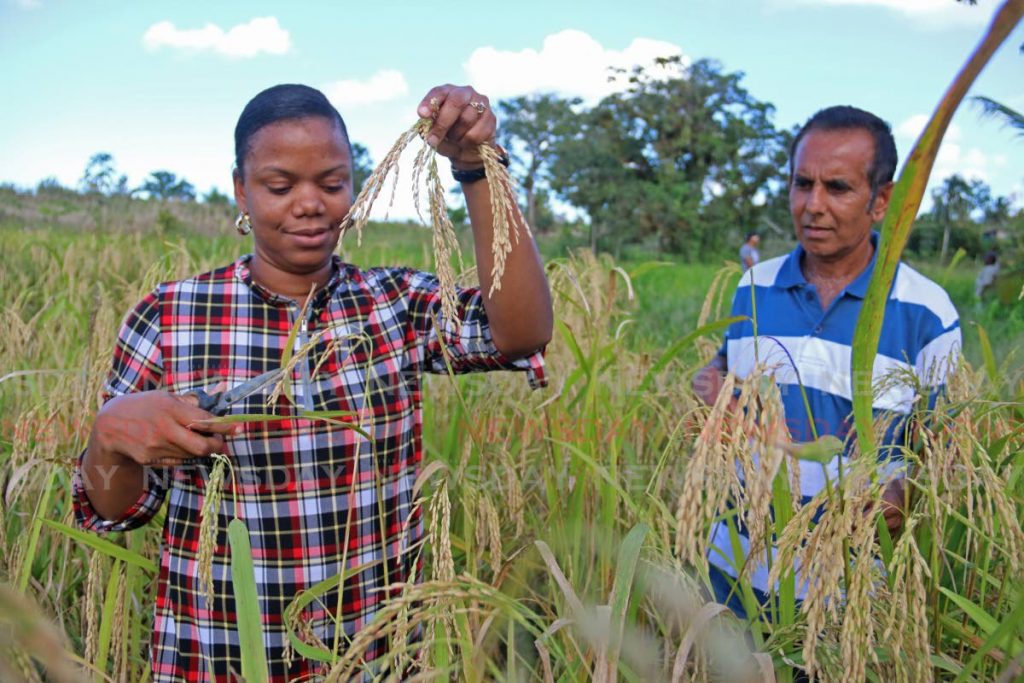
“And if you drop a bunch, you will find yourself combing through the field to find it. When you put it out to dry and the birds come and spill grains on the ground, you will make sure and pick back up every single one that fell.”
Moruga to the world
Moruga hill rice is more than just a cash crop. For the people of Moruga, it is a way of life and piece of living history that connects generations to each other.
“This is a heritage rice. The Merikins moved from the companies and went into smaller communities, and because of the remoteness they didn’t have access to groceries regularly. So they had to grow their food, and rice cultivation was passed down through the generations. Growing up and even hearing historical accounts from my parents and grandparents and seeing the rice cultivated, it has a long history.”
Subratee shares a similar story. And he is also now passing the torch in a way to his daughter, Angelika, who has joined him in the fields since she was a girl. Even though she is an electrician by trade, she prefers growing rice.
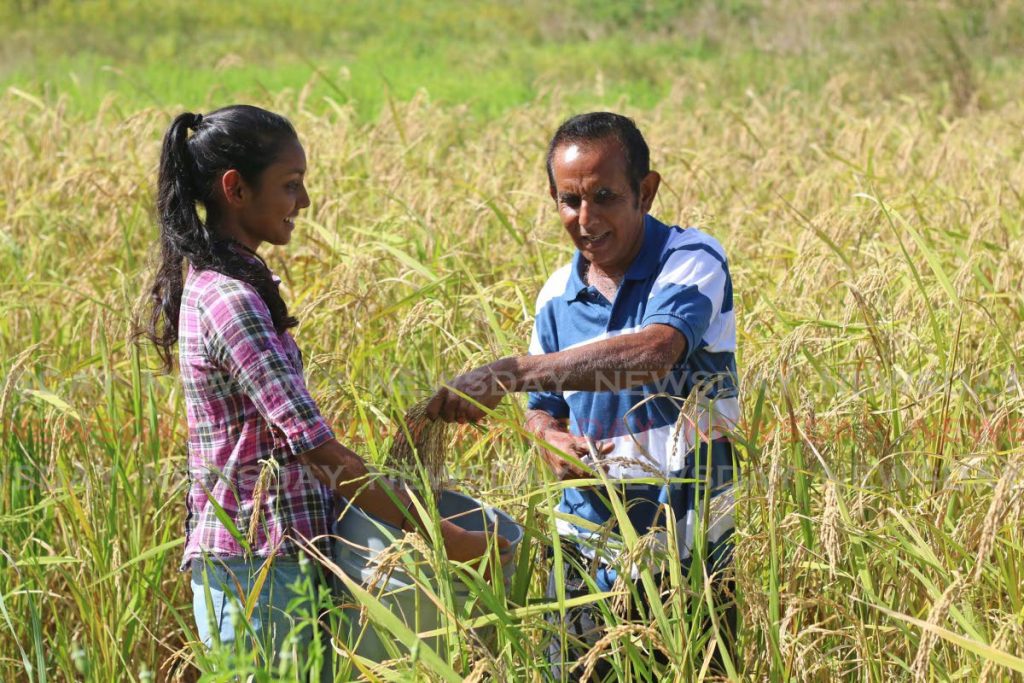
Interest in Moruga hill rice was piqued internationally when a New York Times article in 2018 charted the bearded hill rice’s journey from Charleston, where it was considered extinct, to Moruga.
Trinidadians also started taking notice. Now, the society is piggybacking on that awareness.
“Nothing happens before its time and I think with the renewed focus on agriculture, and now the emphasis is how to generate enough revenue and food security given the global challenges, I think people are becoming more aware and appreciative of the fact that we have this unique staple that can be easily cultivated, has high nutritional value and can be used as a catalyst to generate revenue,” Cooper-Lee said.
Coining a term
Francis Morean, an ethnobotanist with Merikin heritage, was the first to coin the term Moruga hill rice as a hashtag during a series of lectures he gave in the US on the varieties of hill rice in TT in the mid-2010s.
His research, spanning, Trinidad, the American South, West Africa and South America, was the first to trace the journey of red bearded hill rice from the Carolinas and the Merikin soldiers to Trinidad.
Morean, who spoke to Business Day by phone, was critical of the New York Times's framing of an American narrative for a grain that has such a deep historical and cultural association, especially among the African diaspora. He was also disappointed that people in TT did not do more of their own research instead of taking the article at face value.
There are over 100 species of hill rice, grown around the world and at least seven in Trinidad. Morean was careful to note that while there was no evidence yet that the strain of rice in Moruga was unique, there was a strong possibility, and more research, especially local research, was needed.
Morean grew up eating hill rice and has made it his stated mission to ensure it is preserved.
"I would say hill rice (from Moruga) has a special taste and special flavour. It has not got the same taste (as other varieties). I always say, if given a choice, my last meal must be hill rice, bene (sesame seeds), red beans, chicken gravy and a little bit of callaloo.
"This rice is special and I do not want to see it die."


Comments
"Moruga hill rice: Trinidad’s superfood grows into a farming enterprise"